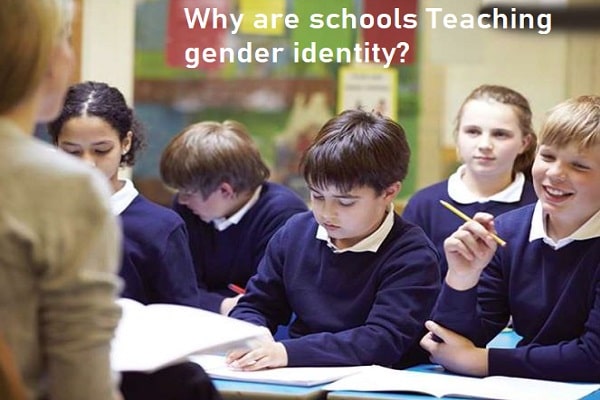As society evolves, schools are increasingly addressing topics like gender identity to create inclusive and supportive environments for all students. Why Are Schools Teaching Gender Identity? This shift reflects a broader understanding of gender as a complex and individual experience rather than a binary concept. Teaching gender identity helps promote empathy, reduce bullying, and prepare students for a diverse world.
Why Are Schools Teaching Gender Identity?
A recent YouGov survey inquires about Britons’ opinions on the timing and content of sex education topics in light of updated government directives. Reports indicate that the government intends to prohibit sex education for children before Year 5 and completely restrict schools from addressing gender identity.
The recent guidelines establish minimum age requirements for various sex education subjects, a move that has faced criticism from certain school principals. Paul Whiteman, the general secretary of the National Association of Head Teachers, expressed his concerns to The Times.
“We are deeply worried about the practical implications of implementing potential ‘limitations.’ Certain children and adolescents are currently obtaining information from various external sources beyond school, potentially leading them to seek information from less trustworthy sources.”
A new YouGov survey has questioned the British public about the appropriate age for schools to address different sex education topics with students, considering the subject matter previewed before the announcements and areas already included in the Relationships, Sex, and Health Education curriculum.

What are the proposed age limits in Primary and Secondary schools?
In primary school:
- Children should not be educated about the dangers of online gaming, scams, and age restrictions on social media and gambling websites until after Year 3.
- Puberty and essential information about the menstrual cycle should not be taught before Year 4.
- Sex education is to be taught from Year 5 onwards, aligned with the content covered in the national science curriculum regarding conception and birth.
In secondary:
- Concerns about sexual harassment, pornographic material, upskirting, and unauthorized sharing of intimate sexual images are not to be addressed before Year 7.
- References to suicide are prohibited until Year 8.
- Detailed conversation about sexual violence, such as rape and sexual assault, is not permitted until Year 9.
The guidance also mentions that schools need to have a policy for teachers when questioned about subjects only suitable for older children. This could involve requesting a student to talk to their parent or directing them to support services if necessary.
What variances exist in opinions on the content of sex education based on age, gender, and voting preference?
The most significant variances among different groups pertain to gender identity issues. Women, younger individuals, and Labour supporters are notably more inclined than their male, older, and Tory voting counterparts to advocate for the inclusion of transgender and non-binary identities in sex education.
People of all gender generally hold similar views on most topics, with women (81%) slightly more inclined than men (74%) to support teaching sexual identity in schools. However, men (71%) are more likely than women (65%) to advocate for explicit discussions of sexual acts in sex education.
Read also more related topics: How Much Do Teachers Make a Month in New York?
How to Become a Kindergarten Teacher Without a Degree?
What Degree Do You Need to Become a Preschool Teacher?
What are The 10 Roles Of a Teacher?
FAQs on Why Are Schools Teaching Gender Identity?
What is Gender Identity?
Gender identity refers to a person’s internal sense of their gender, which may or may not align with the sex they were assigned at birth. It’s about how individuals perceive themselves and what they call themselves, which can be male, female, both, neither, or somewhere along the gender spectrum.
Why is Gender Identity Important in Education?
Understanding gender identity is crucial for fostering an inclusive school environment where all students feel safe and respected. It helps prevent discrimination and bullying, allowing every student to express themselves freely and authentically. Schools aim to equip students with the knowledge and empathy needed to thrive in a diverse society.
At What Age is Gender Identity Introduced in Schools?
Gender identity is often introduced in age-appropriate ways. In early education, it may be as simple as teaching respect for everyone, regardless of differences. As students grow older, more detailed discussions on gender identity and expression are included, aligning with their developmental stages.
Is Teaching Gender Identity Part of the Curriculum?
In many places, teaching gender identity is integrated into health, social studies, or diversity education. The goal is not to promote any particular viewpoint but to provide students with a broad understanding of human diversity. This education is often guided by national or state standards that emphasize inclusivity and respect.
Does Teaching Gender Identity Confuse Children?
Research shows that teaching about gender identity does not confuse children. Instead, it helps them develop a clearer understanding of themselves and others. By learning about gender diversity, students are better equipped to respect and support their peers, leading to a more positive school climate.
Conclusion
Schools are teaching gender identity to foster an environment of respect, inclusivity, and understanding. This education is crucial for developing well-rounded individuals who can navigate and contribute positively to a diverse world. By addressing gender identity, schools aim to reduce prejudice, support all students, and prepare them for the complexities of modern society
